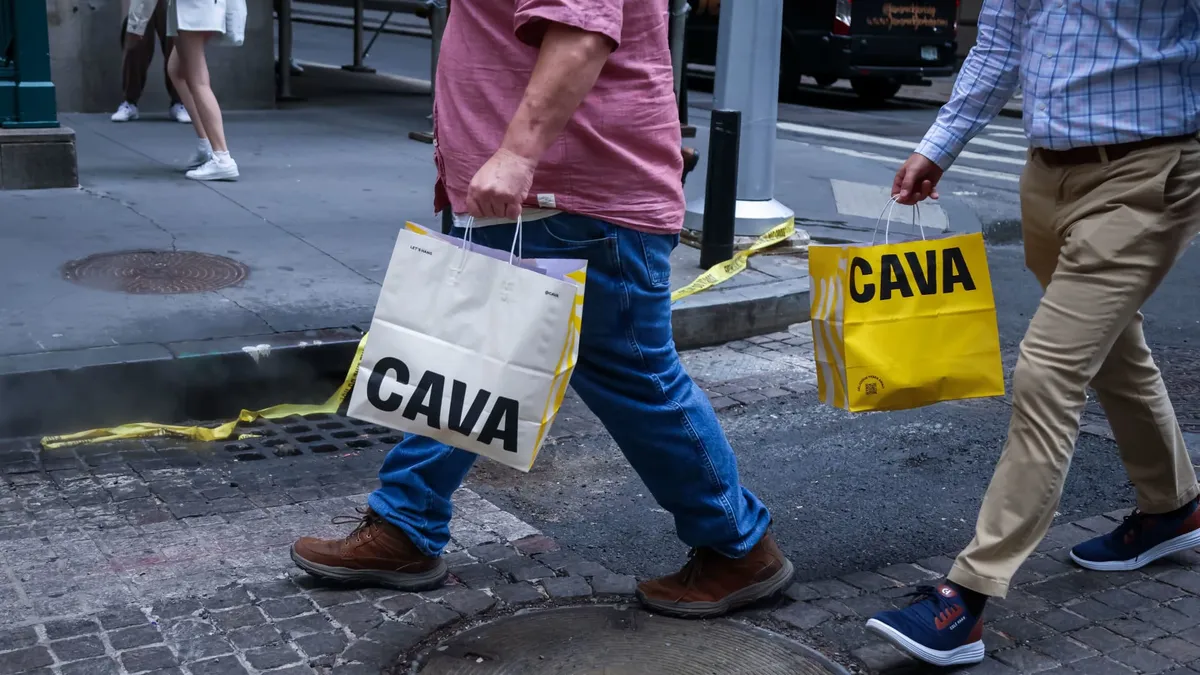
On Tuesday, Cava, the popular Mediterranean fast-casual chain, announced a downward revision of its full-year forecast for the second consecutive quarter. This adjustment comes as the company observes a noticeable decline in visits from younger consumers, particularly those aged 25 to 34, who are frequent patrons of fast-casual dining establishments. Cava's Chief Financial Officer, Tricia Tolivar, highlighted in an interview that this age demographic has been impacted more severely than others, reflecting a broader trend within the fast-casual restaurant sector.
Tricia Tolivar attributed the reduced demand from younger diners to several economic challenges they face, including a higher unemployment rate and the resumption of student loan repayments that began in the spring. Additionally, she pointed out that economic policies, such as tariffs imposed by former President Donald Trump, have contributed to an overall uncertainty among consumers. This cautious approach to dining out is echoed by Chipotle Mexican Grill, a direct competitor, which reported similar trends among the same age group during its third-quarter earnings announcement.
Looking ahead to 2025, Cava has revised its projections for same-store sales growth down to a range of 3% to 4%, a decrease from the previously estimated 4% to 6%. Furthermore, the company anticipates a decline in restaurant-level profit margins, adjusting its forecast to fall between 24.4% and 24.8%, down from an earlier expectation of 24.8% to 25.2%. Following this announcement, Cava's shares dipped 5% in after-hours trading, bringing the stock's total decline to 54% this year.
For the quarter ending on October 5, Cava reported earnings that met Wall Street expectations, with an adjusted earnings per share of 12 cents. However, revenue stood at $292.2 million, slightly below the anticipated $292.6 million. The chain's same-store sales increased by 1.9%, falling short of the expected growth of 2.8%, as per estimates from StreetAccount. While overall traffic remained flat compared to the previous year, strategic menu price increases and a greater selection of premium protein options helped to boost sales.
Despite the slower growth in same-store sales, Cava is reportedly gaining market share. Tolivar indicated that this trend suggests younger consumers may be opting to cook at home or prepare their own lunches rather than choosing fast food alternatives. "It appears that consumers are being more thoughtful about their dining occasions and how frequently they are dining out," Tolivar remarked.
In contrast to competitors such as Chipotle and the broader restaurant industry, Cava has experienced stronger same-store sales growth among lower-income consumers. Tolivar credited this success to the chain's decision to maintain menu prices below inflation, thereby appealing to budget-conscious diners. Cava's net sales rose by 20% to $292.2 million, driven by the opening of new locations. Since the third quarter of the previous year, Cava has opened a net total of 74 new restaurants, expanding its footprint to 415 locations as of October 5.
In its fiscal third quarter, Cava reported a net income of $14.7 million, or 12 cents per share, a decrease from $18 million, or 15 cents per share, reported in the same quarter last year. When excluding executive transition costs and other variables, Cava's earnings per share remained consistent at 12 cents, reflecting the company's efforts to adapt to changing consumer preferences and economic conditions.